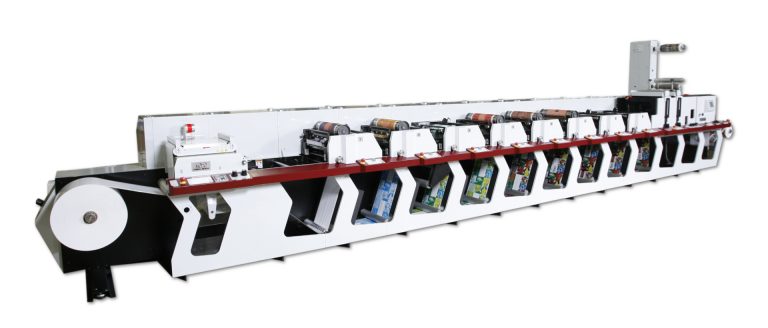Flexography is a method of printing that uses flexible printing plates with ink. Ink is deposited onto a raised or profiled section of the plate, which then transfers an image to the material being printed. The plates that are used are flexible photopolymer plates.
Since its inception, flexography has rapidly improved, becoming an excellent form of printing for fast, precise and relatively simple printing. Flexographic presses became widely used for the printing of labels, because of their versatility. This method allows the use of many different types of inks (water soluble, with solvent, UV inks…) printing onto many different types of material (labels, corrugated cardboard, plastic…).
The conventional method for preparing a flexographic plate involves the creation of a negative, which is placed on top of a photopolymer plate. The plate is then exposed to UV lighting. The areas that are protected by the black parts of the negative get washed out with a chemical, leaving the sections that were exposed to the UV, hardened, forming the raised or profiled sections of the image. With this method however, stray light sources can get in and limit the precision of the image formed onto the printing plate.
Many of the innovations in flexography come from the making of the printing plates and what is called CtP (“Computer to Plate”). This technology allows you to engrave or burn an image directly onto the plates from a computer, without the use of a negative. You insert the image file into a program on the computer, and the computer essentially manufactures the printing plate. With this technology, there is no need for a negative. Stray sources of light are no longer a problem and the quality of the screen dots (and therefore the image) is vastly improved. In other words, the plates can be made with much higher resolutions due to the very small screen dots generated by the CtP.
All of these innovations make it possible to produce plates with higher resolutions, a greater life expectancy and improved ink transfer.
The vitality of the flexographic industry continues to make it possible to offer a competitive and effective means of printing, in terms of cost, quality and even durability.








